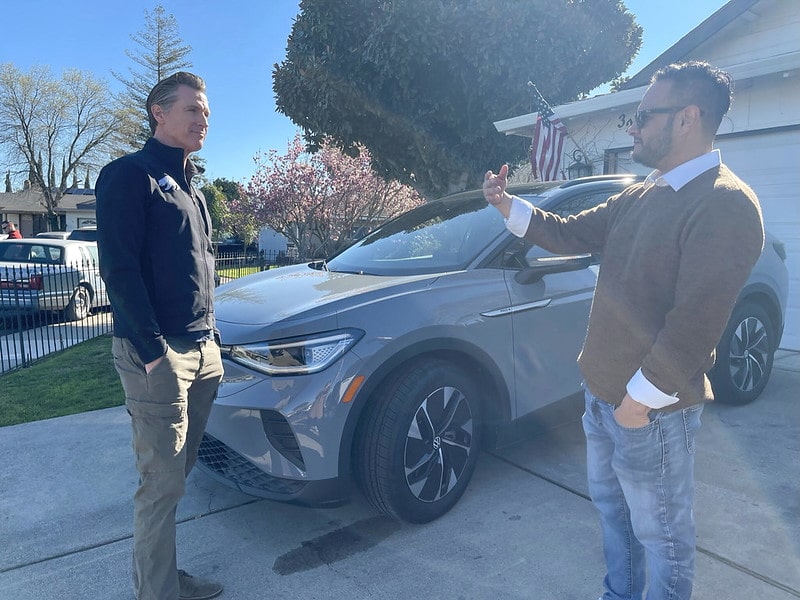This post was originally published on Eco Watch
President-elect Donald Trump has expressed his intention to do away with what he has referred to as the “electric vehicle mandate” — a federal tax credit of $7,500 for people who purchase electric vehicles (EVs) in the United States, reported AFP.
If Trump decides to end the EV rebate, California Governor Gavin Newsom has pledged to step in and make credits available to eligible state residents who purchase the zero-emissions vehicles.
“We will intervene if the Trump administration eliminates the federal tax credit, doubling down on our commitment to clean air and green jobs in California,” Newsom said in a statement, as The New York Times reported. “We’re not turning back on a clean transportation future — we’re going to make it more affordable for people to drive vehicles that don’t pollute.”
California officials are gearing up for a long battle with the incoming Republican administration over environmental policy and other issues, including immigration.
It is expected that Trump will once again attempt to block California’s authority to establish its own auto emissions standards that are more stringent than the federal limits.
Newsom has already called a special state legislative session for next month, to discuss increased funding for litigation, among other agenda items. California sued the Trump administration more than 120 times during Trump’s first term.
Trump does not have the ability to unilaterally get rid of the federal EV tax rebates, as they are part of the 2022 Inflation Reduction Act (IRA). In order to eliminate them, Congress would need to pass a new law or amend the IRA. However, Trump’s transition team has signified that he would like to wipe them out.
The IRA provides for a tax rebate of $7,500 for an electric, fuel-cell or plug-in hybrid vehicle, or $4,000 for a used one, with some restrictions such as income limits.
In October, the Kelley Blue Book average price of a new EV was $56,902, while a gas-powered vehicle sold for $48,623 — a difference of $8,279.
EV sales and production growth is a threat not only to gas-powered cars, but to the fossil fuel industry itself — a big donor to Trump’s presidential campaign.
If Trump stops the credit, Newsom said he would propose the restarting of a California rebate program that was in place from 2010 to 2023. According to state officials, the program helped fund more than 594,000 vehicles, saving more than 450 million gallons of fuel.
“Consumers continue to prove the skeptics wrong – zero-emission vehicles are here to stay,” Newsom said, as reported by The Associated Press.
For the California rebates to be reinstated, the state legislature would need to vote in favor.
A spokesperson for Newsom said a new rebate program could exclude some carmakers, including Tesla. The program is meant to encourage market competition and innovation, the spokesperson explained, and Tesla already has a large share of California’s automobile market.
The terms of a new rebate program would likely be established by the California Air Resources Board.
California has led the country’s adoption of EVs. The top five cities with the most registered EVs have been in The Golden State.
Gov. Gavin Newsom traveled to Stockton to visit Michael Macias, the owner of the millionth electric vehicle sold in California, on Feb. 25, 2022. Macias received rebates and tax credits on his purchase of a new Volkswagen ID.4. California Governor / Flickr
According to auto industry data analysis firm S&P Global Mobility, more than 30 percent of the San Francisco Bay Area’s vehicle registrations in 2023 were EVs. In Los Angeles it was 25 percent.
“We were counting on that federal tax rebate credit,” said Christopher Bowe, a FedEx senior manager living in Hayward, California, who bought his first EV in 2022 with the $7,500 federal credit and state credits worth $2,000, as The New York Times reported. “We’re not in the position where we can easily afford these things if not for some of these programs.”
The post California Gov. Newsom Promises to Make EV Rebates Available if Trump Ends Fed Tax Credits appeared first on EcoWatch.





0 Comments